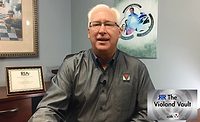Positioning, People, and Partnerships | Part 1




Most service and professional businesses look just like all other service and professional businesses. They are indistinguishable. So, how do accounting firms, law offices, or restoration contractors differentiate themselves from their competitors? The fact is that positioning works for professional and service companies just as it does for organizations that sell tangible goods.
Harvard’s Michael Porter is famous for his work on business strategy. He says there are only two ways to create a sustainable advantage over your competition. One is to compete on price and the other—of which Porter is clearly an advocate—is to stand for something; to distinguish your offering in a way that is relevant and important; that provides more value to your customers and prospects. That difference is your unique “position” in the marketplace.
Here’s where it gets hard. How do you create a meaningful difference from the competing group of restoration and cleaning contractors in your service area who provide essentially the same services as you? Let’s begin by looking at our industry and the trends we see.
The need for the work that restoration contractors do is not going away. Third Party Administrators (TPAs) are becoming more numerous and are controlling a growing portion of property insurance claims, up from the reported 25 to 30% they handled in the recent past. They are defining many of the performance requirements that contractors must achieve to not only participate in their programs, but to succeed in the market. Profits continue to be squeezed. Larger contractors and investors from outside the industry are buying up successful independent restorers, increasing the pace of consolidation within the industry. Good employees are harder and harder to find and keep. Unemployment is low across most of North America, and the need to pass a drug test makes the pool of acceptable candidates even smaller.
In the remainder of this article and in Part II, which will appear next month, we will explore a marketing strategy and an operational and personnel-based approach that may represent the only option for survival for many of the smaller, independent firms in our industry. For now, let’s focus on the concept of positioning that Porter talks about.
From a broader marketing perspective, Porter uses the terms wide and deep to describe two strategy options. Wide means serving a very broad range of customers and providing a long list of services. Deep refers to the more preferred option, in Porter’s view, of becoming a focused specialist. The focus can relate either to the type of products and services provided or to the segments of the market, which are the kinds of customers you choose to serve. This will be hard for many in restoration to hear, but going deep has proven to be a more-effective strategy. The toughest mental paradigm to overcome is to stop trying to be everything to everyone. Your strongest position is built on actually taking away, so think reduction.
A recent article about the chairman and CEO of General Motors, Mary Barra, focused on the impact she has had on the organization during her three years at the helm. Her track record is about focus and profitability. One of the phrases she has employed in changing the culture is “customer first.” GM has closed down money-losing operations in four countries and sold their European operations to Peugeot S.A., exiting a huge but unprofitable market. “GM used to be all about sales volume and market share,” said AutoTrader senior analyst Michelle Krebs. “Now, if they don’t see a path to profitability and leadership, they get out.” Does any of this, on a smaller scale, sound familiar?
How would this deep or vertical strategy play out in our industry? First, consider the market segments—groups of customers or referral sources—that you have to choose from. You can, for example, choose to “play in the TPA sandbox” or not. That could be a step toward focus right there. If you choose the non-TPA controlled business, are there pieces or segments of the commercial and remaining residential market that could support a profitable business of the size you envision? To a large extent, the answer will be driven by your location and the size of your service area. In rural Kansas, Iowa, or the Dakotas you may have to pursue a more everything-to-all-people strategy. Even in those cases, however, more depth with certain customers can provide both a competitive advantage and make it decidedly more difficult for competitors to poach your customers. If there is sufficient opportunity in your market, could you focus on only commercial properties, only multi-tenant residential facilities, or only health care + education + municipal markets? Clearly, these are simply examples, but the answer for your business begins with evaluating your existing customers and the market potential in your service area.
How do you go about deciding how to evaluate your market? Start with what you know. Why do your current customers choose to do business with you? What is it about your company, your service, or your people that sets you apart? If you aren’t sure of the answer, ask your customers! Are there segments of customers with whom you do a significant amount of business? What is it about these customers, their needs, and the value you provide that leads them to prefer your company?
In the mid-1980s, manufacturing strategist and London Business School professor Terry Hill introduced the concepts of order qualifiers, basic characteristics that enable organizations to compete, and order winners, exceptional, unique, and distinguishing characteristics that give businesses an edge over competitors. When asked to list the reasons why people buy from you, responses like “high quality,” “exceptional service,” and “certified technicians using the latest equipment” are examples of order qualifiers. Your goal is to find the reasons, the order winners, for why certain customers choose you over your competition.
Perhaps you have expanded your service offerings for these customers to things that “aren’t really what we’re good at” or “aren’t as profitable as the core services we offer.” If the add-ons cause these customers to want to do business with you and add somewhat profitable revenue to your company, they are adding value for you beyond simply the bottom line. When you choose to increase your focus on these customers, one of your action items will be to get better at the add-on services and your ability to deliver them profitably.
When you are searching for ways to stand out from your competitors, consider the strategy of positioning your business as a “deeper” partner with a more narrowly focused segment of customers. Analyze your current business and the customers who are most profitable. Identify and focus on the order winners for these customer segments from which you want to generate the majority of your business.
In Part II of Positioning, People, and Partnerships we will explore partnerships as a means of creating order winners and examine how a razor-sharp focus on getting the best people into your organization may be the key to one of the few options for survival for many in our industry.
Looking for a reprint of this article?
From high-res PDFs to custom plaques, order your copy today!









